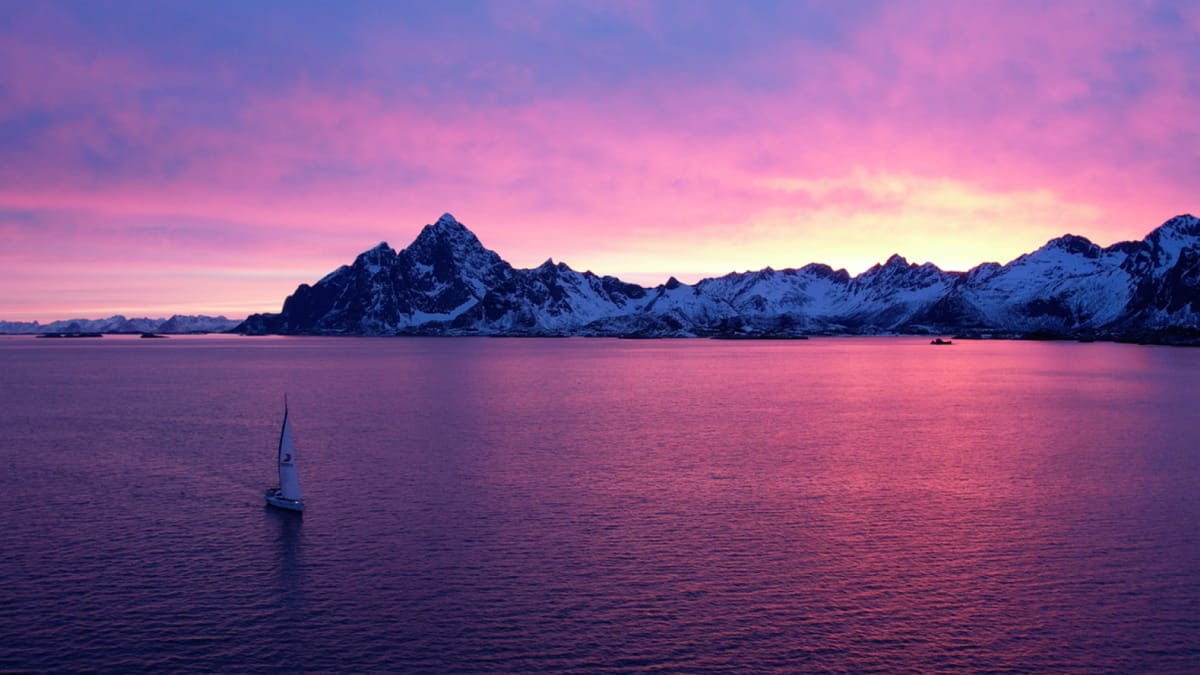When team Kahuna sat down to plan their 5-month expedition, careful thought went into which locations they would include in their itinerary. The destinations had to help them meet their objectives of raising ecological awareness and documenting less-travelled mountainous routes. At the same time, they also had to ensure that their chosen locations suited the boat's structure for sustainable sailing.
After thorough research, the team decided to start from Lorient and travel along the Norwegian coast to Svalbard. Below is the itinerary they mapped out.
Trondheim
Think multi-coloured wooden houses and the picturesque Nidelva river, and you might get an idea of the beauty team Kahuna is sailing into for their first stop. Besides being the third most populated city in Norway, Trondheim was the country's first capital during the Viking age in the 12th century. It's located on the coast of the bay formed by the Sør-Trøndelag fjord; from here, the mountains are within easy reach, facilitating Nordic skiing near the city.
This location will be the first time the team gets to test their skills in the actual environment they trained for. A good mix of skiing spots and diverse flora and fauna make Trondheim a great first stopover for the Kahuna expedition.
Bodø
The team will then travel to Bodo, the first city that's north of the Arctic circle and mainly known for its easy access to the mountains, giving beginners and experienced hikers a broad selection of trails. Bodo's jagged peaks, crystal clear lakes, and waterfalls are sure to catch any adventurer's eye, and team Kahuna will certainly document all their adventures and challenging experiences while exploring Bodo's trails.
By the time they reach Bodo, the team will have travelled approximately 3,500 km from Lorient and Trondheim while consistently keeping track of the boat's performance by monitoring its systems and the energy-management dashboard they created. While at Bodo, the team will be taking care of any necessary boat maintenance and system repairs as they prepare for the next leg of their journey.
Lofoten Islands
Their next stop will be the Lofoten Islands. Along with being one of the places in Norway to see the northern lights, the exotic Lofoten Islands are also known for their dramatic landscape. This group of islands has peaks of more than 1000m right by the sea, painting a picture of magnificent contrast.
For team Kahuna, the Lofoten Islands are the perfect combination of sea and mountains to meet the goals of their expedition. Here, they have the opportunity to disembark at the beach, put on their skis, and start climbing the mountain right away. The team will also have to spend a little more time on these extraordinary islands until the ice melts for better sailing conditions before continuing their journey.
Tromsø
Once the climate conditions are more appropriate for them to move on, the team will head to Tromso, Norway. Tromso is famous for the Lyngen Alps, and on a clear day, you can see the ocean to the west and the Lyngen Alps to the east. The Kahuna team will also witness the 'midnight sun' phenomenon, wherein the sun will remain visible even at midnight. The snow and these light conditions combined will give the team some unique skiing opportunities and a chance to document their route in these uncommon circumstances. There are also opportunities for the team to go whale spotting while they are there.
At Tromso, the team will also need to be prepared for anything as weather conditions on the islands can get unpredictable.
Longyearbyen
In their final stop of the expedition, team Kahuna will be exploring Longyearbyen, the closest city to the North Pole and also the capital of Svalbard. Longyearbyen has remarkable wildlife and several glaciers that connect directly to the sea. In fact, it falls in the part of the planet called the Arctic desert and is known to be a hostile environment with more bears than people. Here, the team will be pushing the limits of the skills they sharpened during their year-long preparation and putting into place the safety measures they have arranged, like their physical and medical training.
Aside from the breath-taking yet challenging places team Kahuna will stop at, they also have to navigate through the North Sea, which is known to be difficult to cross. However, this will be perfect for them to test the boat's energy management dashboard, challenge themselves on the sea, and embrace their passion for sailing. All in all, their chosen destinations will define their expedition and unleash their potential. During these 5 months, team Kahuna won't just learn about sustainable travel and the destinations they explore but also the importance of teamwork, integrity, and competence to make a positive, lasting impact.
Watch this space to learn more about the Kahuna expedition.


